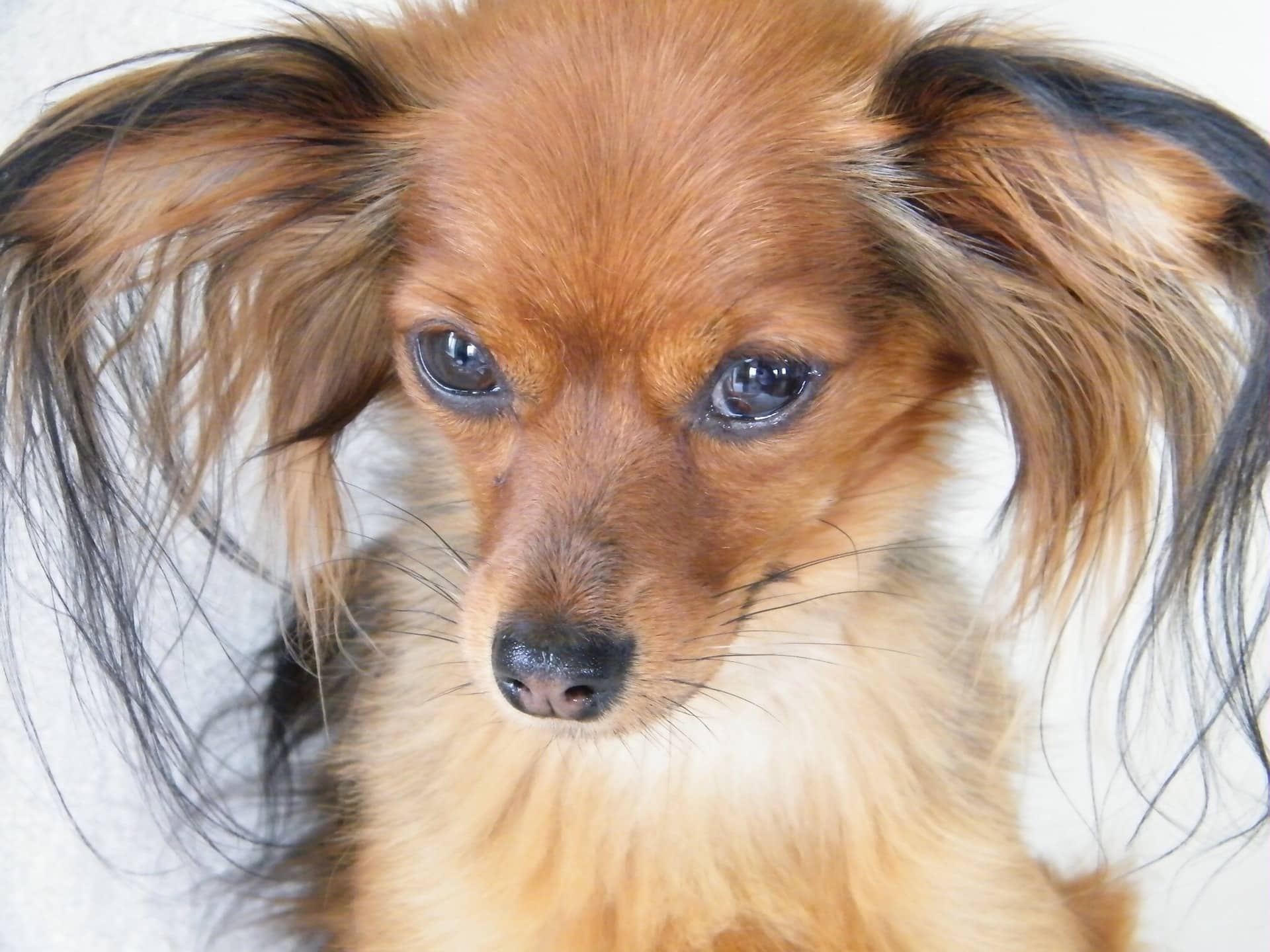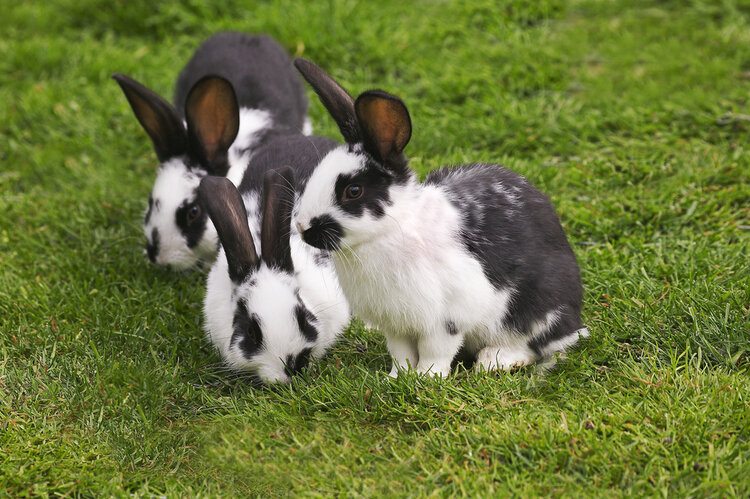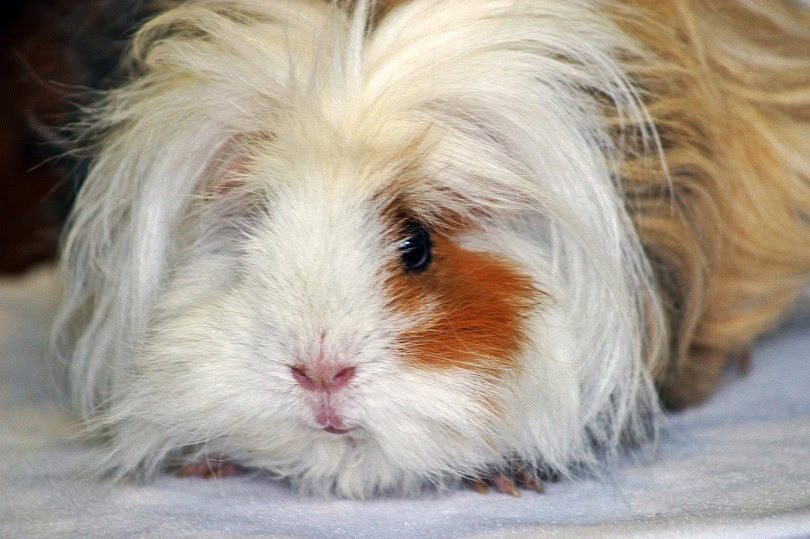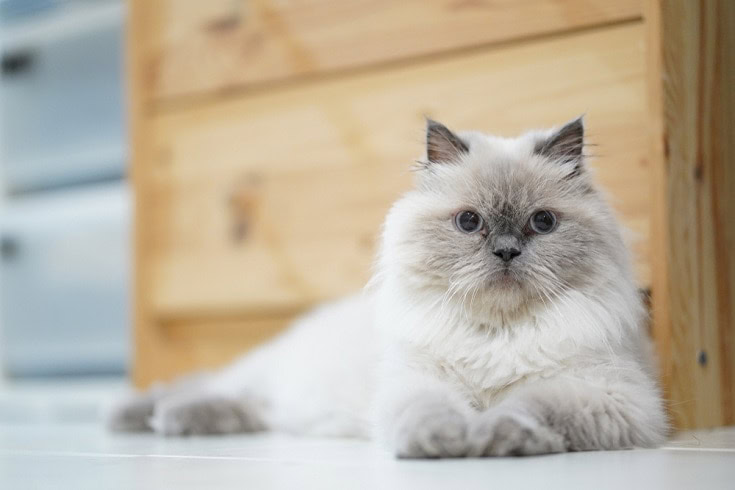Click Below to Skip Ahead
Don’t let their size fool you! Despite being one of the smallest breeds in the world, Russkiy Toys have huge personalities. Better known by their more common name, the Russian Toy, this particular breed hasn’t been around for nearly as long as some other dogs.
Russkiy Toys were developed from English Toy Terriers that were imported to Russia in the 18th century. In fact, it’s amazing that this breed even still exists because they were almost completely wiped out during the Russian Revolution in the early 20th century.
Breed Overview
Height:
8–11 inches
Weight:
Up to 6.5 pounds
Lifespan:
12–14+ years
Colors:
Black and tan, blue and tan, brown and tan, red, red and brown, red sable
Suitable for:
Loving families, active families
Temperament:
Smart, eager to please, protective, playful, highly trainable
Due to the introduction of other small breeds into the Russkiy’s genetic line (which could explain their striking resemblance to the Chihuahua), this dog is no longer rare. That said, the breed as we know them today has only been around since 1958, when the first modern-day Russkiy Toy puppy was born.
These dogs have both long- and smooth-coated varieties in colors ranging from red and brown to black, typically with tan markings. If you’re considering owning one of these adorable and personable pups, read on as we tell you everything that you need to know in this guide.
Russkiy Toy Characteristics
Russkiy Toy Puppies
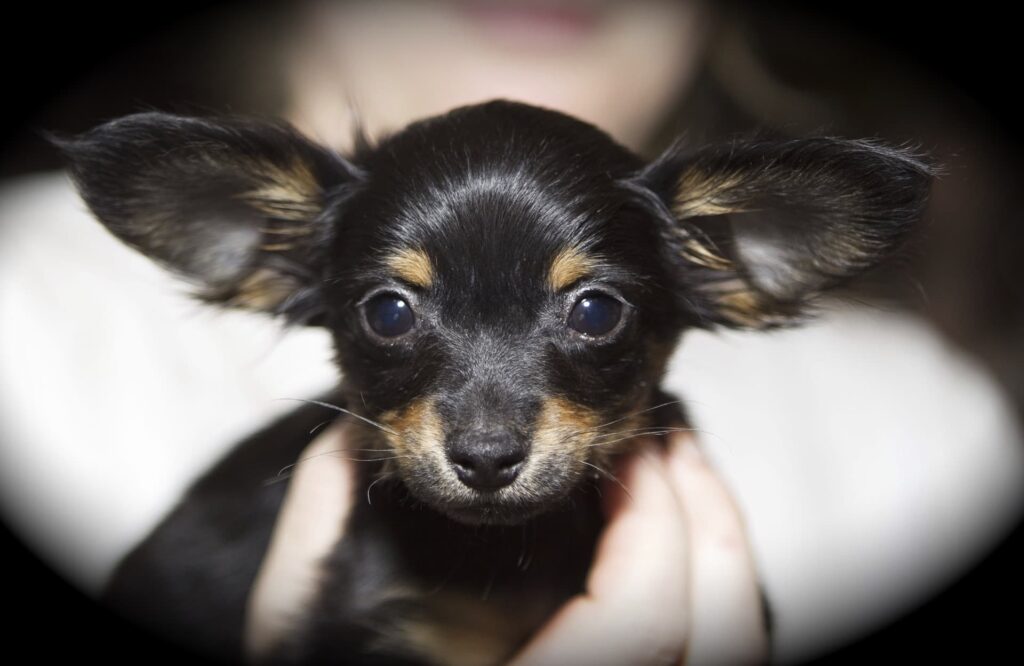
Russkiy Toys are intelligent but impish little dogs that love their big humans. Although they aren’t the most energetic pups, Russkiys do love to play and be mentally stimulated as a result of their intelligence. Your dog won’t care if they’re inside or outside; they’ll run around your house just the same way they would if they were in your backyard.
That said, having a big yard with a fence is a plus in order to keep them safe and prevent your inside furniture and décor from potentially getting destroyed due to their playfulness. Let them have their “zoomies” outdoors so when they come back inside, they can participate in their other favorite activity: lying in your lap and being lazy.
Due to their love for their owners, they’ll make an excellent protector and watchdog over you and your house. But don’t mistake their protectiveness for aggressiveness; they’re too sweet for that. Just be sure to return their affection because they aren’t afraid to let you know that they’re feeling neglected. Since they have a desire to please, training them as a puppy should be a piece of cake.

Temperament & Intelligence of the Russkiy Toy
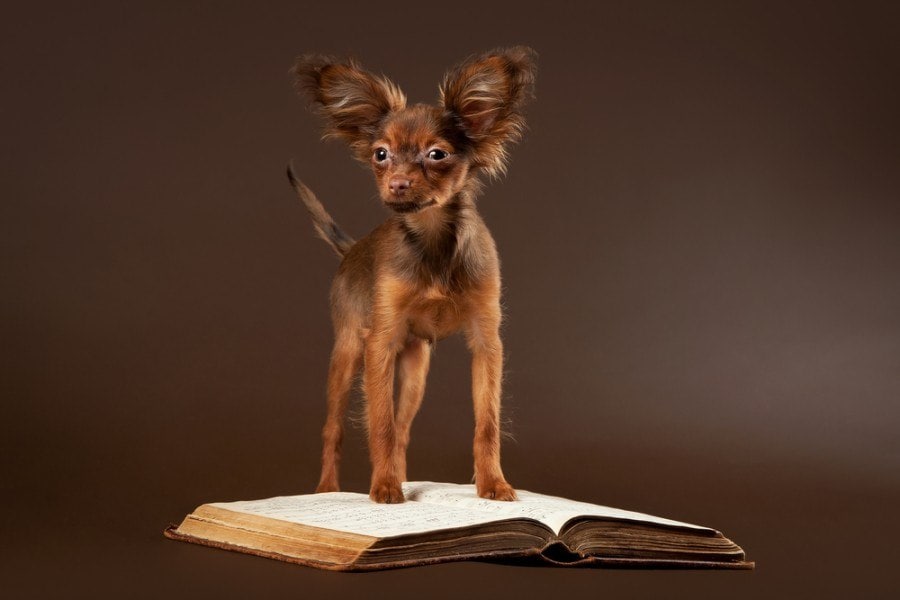
The first thing you need to know about these dogs is that they love hard. They truly thrive on constant love and affection from their humans. That doesn’t mean you have to pet and play with them all the time. They don’t need constant activity, just companionship. Sometimes a warm lap to cuddle up in will do just fine. But they do have a playful nature and may feel neglected if their humans can’t provide both playtime and snuggles.
The Russkiy’s desire to play comes from the fact that they are highly intelligent. They love to interact with humans, other animals, and toys because it provides them with stimulation and helps them learn so they aren’t bored.
Their intelligence, combined with a desire to please, also means they are highly trainable. Since they love their humans, they want to do what they know will make them happy. Whether you’re trying to teach your pup obedience or tricks, it shouldn’t be difficult as long as you provide them with affection in the process.
They are also vocal dogs because they want to communicate with their humans. They will bark to alert but may also try to vocalize just to get someone’s attention when they feel like they are being neglected. But Russkiys aren’t aggressive, so the old adage is true: Their bark is worse than their bite!
Are These Dogs Good for Families? 👪
Russkiys are great family dogs. The more people around to provide them with affection, the more they thrive. But they aren’t good dogs for workaholic families since they love to play. Active families that can dedicate time to running around with their pups are what Russkiys need, whether that be going to the park or staying in their own backyard.
You also don’t have to worry about your Russkiy around children since they aren’t aggressive in nature. Your dog will see your kid as just one more person who will pet and play with him. However, that doesn’t mean they should be left unsupervised with children, as all dogs will nip or bite as a defense mechanism if provoked. Although you can train your dog to help prevent this, it’s just as important to teach your kids how to interact with dogs.
Does This Breed Get Along With Other Pets?
Russkiys are good with other dogs if they aren’t immediately forced to have a relationship with them. They are friendly with people whom they know but can take a while to warm up to strangers, including dogs and other pets. Due to their small size, you may have to be careful when introducing them to larger dogs in case of any aggression.
If you have cats, your Russkiy may also try to “challenge” them since they are often the same size as cats, if not even smaller. But they aren’t trying to be aggressive toward felines. Usually, this is done in order to “size them up” and can eventually even lead to your dog and cat playing with each other.
As long as you introduce your dog to other pets under your supervision and keep them separated when you’re not there, they should be fine. Once Russkiys become familiar with your other pets, they will warm up pretty quickly and may even start to play together, which will give you a break from playtime duty.
 Things to Know When Owning a Russkiy Toy
Things to Know When Owning a Russkiy Toy
Your Russkiy can’t thrive in your home without you there to feed and care for them. This includes grooming and monitoring their health. Here are important things to know about caring for your Russkiy.
Food & Diet Requirements 🦴
Since Russkiys are toy dogs, they have small mouths, so they need dog food that contains small kibble. This can help them chew and digest the food more easily and prevent choking. Puppy food normally has smaller kibble than adult dog food, but you shouldn’t continue to feed your adult Russkiy puppy food just because the kibble is smaller. Puppy food contains different nutrients than adult dog food does. Fortunately, there are adult dog foods that have small kibble and can provide your dog with the nutrients that they need to stay healthy.
Russkiys are purebred dogs, so any food that you feed them should be both high-quality and nutritious. Look for foods that are high in meat-based proteins (e.g., chicken or turkey as the main ingredient) and low in fat.
Although these are small and active dogs, they can become overweight, especially as they age and their metabolism slows down. It’s important to feed your dog the proper amount of food for their weight (which can be found on the back of the bag). When training your Russkiy, you shouldn’t overdo it on treats, as this can also cause your dog to gain weight, especially if they aren’t getting the right amount of exercise.
Exercise 🐕
The Russkiy isn’t the most energetic breed out there, but they aren’t the most relaxed either. They have a moderate amount of energy, which means they benefit from regular exercise in order to stimulate them and keep them healthy.
Since they are small dogs, it is important that you don’t exercise them too much because they can tire out and become overworked more easily. This is not a dog that you should take with you while going for an hour-long hike or jog.
Instead, Russkiys benefit from 10–15-minute intervals of exercise two to three times per day. That exercise can take place in the form of a short walk around the park or your neighborhood or by playing fetch or running around in the yard. Your dog will let you know when they get tired by either panting or stopping playtime altogether, so watch your pup closely and allow them time to rest and rehydrate.
Training 🎾
These dogs are highly trainable and want to do what they know pleases their owners. However, they can have a bit of independence and stubbornness about them, so it is important to use the proper training techniques in order for the training to be most effective.
Socializing and training your puppy early is key for them to develop desired behaviors as they grow into an adult. If you’re having trouble training them yourself, seek out a professional dog trainer for help. But it isn’t just obedience training that these dogs can benefit from.
Since Russkiys are active and intelligent, they are great candidates to compete in dog shows. Trick shows and agility competitions are two activities where your dog can thrive with the right training. Plus, this can be a great way to give your Russkiy the daily exercise that they need.
Grooming ✂️
Russkiys don’t require as much grooming as many other dogs because they don’t shed much. That said, the long-haired variety will require more frequent grooming than the smooth-coat variety. Their long hair is especially prominent around their ears and tail, both of which can become dirtier than the other areas of your dog’s fur.
Long-haired Russkiys should have their coat brushed two to three times per week, while smooth-coat Russkiys can benefit from a once-per-week brushing. If you regularly brush your pup, bathing can be done less frequently. One bath per month with a high-quality shampoo will help keep your dog’s fur healthy and shiny. Monthly nail trims can also be beneficial for your pet and can help prevent them from scratching you.
Health and Conditions 🏥
Although purebred pups tend to suffer from more health problems, the Russkiy is actually an overall healthy breed. The biggest issue that you need to watch out for is teeth problems. It is common for these puppies to not lose all their milk teeth (baby teeth). They should lose all their baby teeth by 9 months of age. Otherwise, they may have to be surgically removed.
Another problem that can occur in Russkiy dogs is periodontal disease. This is caused by a buildup of tartar and bacteria in a dog’s gums. If left untreated, it can cause serious problems, including gingivitis, bleeding gums, and tooth loss. Your dog may also struggle to eat and become less playful and more aggressive.
Since periodontal disease occurs in the gums, it can be hard to recognize until it is already at an advanced stage. Once the disease gets past gingivitis, it is not reversible. So, it is necessary to take preventative measures by regularly brushing your Russkiy’s teeth. You may also wish to have your vet do regular periodontal disease evaluations.
- Retained milk teeth
- Patellar luxation
- Periodontal disease
Male vs. Female
One of the biggest decisions you have to make when getting a dog is whether you want a male or a female. In some breeds, sex makes a difference. But in Russkiy Toys, there is no distinguishable difference between males and females in terms of size and temperament. Whichever sex you get just depends on your preference.
It is important to note that you should choose the sex of your Russkiy carefully if you have other dogs, though. You may not want to mix a male and female dog, especially if your other dog is much bigger than the Russkiy. Due to their size, it can be dangerous for a female Russkiy to become pregnant by a larger dog. Spaying and neutering your pets can help prevent this, but male dogs can still be aggressive toward females, even if both of them are fixed.

3 Little-Known Facts About the Russkiy Toy
1. Russkiys Were a Status Symbol in 18th-Century Russia
Due to their rarity, these dogs were mostly owned by Russian aristocrats and socialites. Their small stature enabled them to be “living accessories” at social events, such as operas and parties.
2. There Used to Be Two Separate Breeds
There are two varieties—smooth-coated and long-coated—that are part of the Russkiy breed. However, up until 1980, the smooth-coated Russian Toy Terrier was the original breed, while the long-coated Moscow Long-Haired Toy Terrier was considered a separate breed.
3. They Used to Be Called Russian Toy Terriers
Since the breed developed from English Toy Terriers that were imported to Russia, the full breed name was the Russian Toy Terrier, but the last word was dropped when the dogs were registered with the Federation Cynologique Internationale, the largest organization for purebred dogs in the world.
 Conclusion
Conclusion
Russkiy Toys may be one of the tiniest breeds, but they have one of the biggest and spunkiest personalities. These little pups are full of love and character, and they are sure to make you smile with their antics.
Their favorite activities include playtime and hanging out with anyone who will give them pets and affection. After playtime, they’ll love to just lie down with you while you watch your favorite TV shows. If you decide to get a Russkiy, it won’t take long for them to become the center of attention in your home.
Featured Image Credit: mon_elevage, Pixabay
